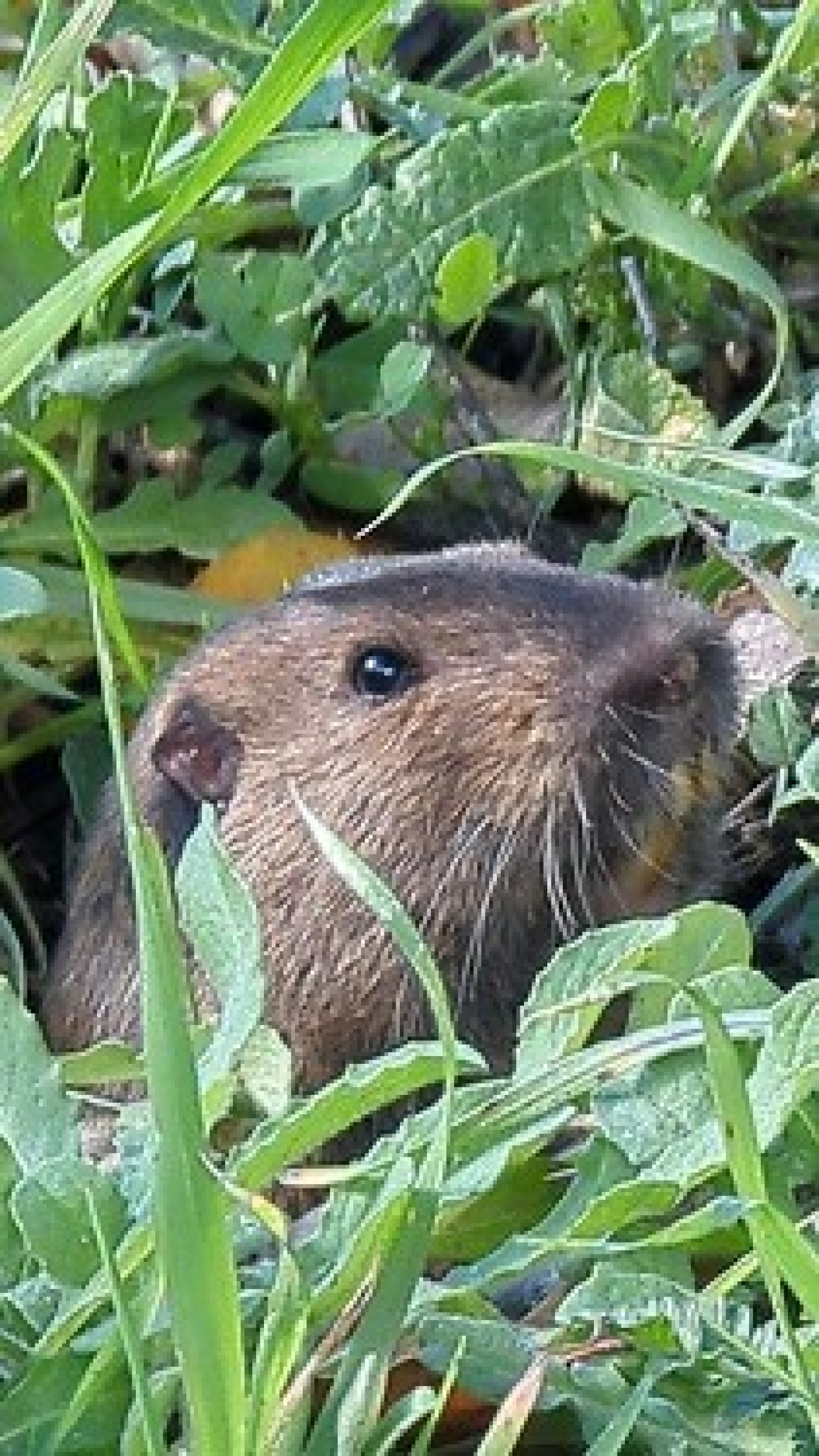Alex Walters investigates whether animals are affected by past activities at Santa Susana Field Laboratory
Office of Environmental Management
March 26, 2024
Alex Walters, right, a fellow in biology granted through EM’s graduate fellowship program at the Oak Ridge Institute for Science and Education, visited the Energy Technology Engineering Center’s (ETEC) portion of the Santa Susana Field Laboratory in January. Walters is pictured at the site with Josh Mengers, EM’s federal project director for ETEC.
Alex Walters investigates whether animals are affected by past activities at Santa Susana Field Laboratory
SIMI VALLEY, Calif. – Did historical research activities at EM’s Energy Technology Engineering Center (ETEC) at the Santa Susana Field Laboratory (SFFL) impact the animals that called it home?
That’s one of the questions Alex Walters, an earth scientist working for the Pacific Northwest National Laboratory (PNNL), hopes to find out as part of his research fellowship with ETEC.
Santa Susana is a nearly 2,850-acre site located in eastern Ventura County, California, about 30 miles southeast of Los Angeles County. It was previously used as a rocket engine testing and nuclear research facility. ETEC is located on about 90 acres in the 290-acre Area IV, which is leased and managed by EM.
Walters began his fellowship in October to work on a biological conservation project as part of the EM Minority Serving Institutions Partnership Program (EM MSIPP). The program provides science and engineering students and graduates with an opportunity for training and mentorship through an Oak Ridge Institute for Science and Education fellowship in targeted technical areas of interests and needs of the EM workforce.

During his visit to the Santa Susana Field Laboratory in January, Alex Walters spotted a Botta’s pocket gopher, an example of mammals that either live at the site or use it as part of a wildlife corridor within EM's Energy Technology Engineering Center Site.
Alex Walters saw a bobcat while working on an Energy Technology Engineering Center biological conservation project as part of the EM Minority Serving Institutions Partnership Program. He was there to gain insight on mammal species that use wildlife corridors by collecting scat as part of his research project.

In January, Walters visited SSFL to gather further insight on mammal species inhabiting wildlife corridors within the ETEC Site by collecting scat from targeted species for laboratory analysis to assess potential uptake of contaminants.
Walters said the January visit was a “reconnaissance trip to get the scoop on the scat,” with the goal of answering two questions: What scat is found at SSFL, and is there enough at each site to collect for sampling?
Joined by Tara Schoenwetter, a senior ecologist with Leidos, Walters spent the week surveying areas of interest both onsite and offsite, collecting and documenting anything related to scat.
“I was pleasantly surprised with finds during our surveying efforts,” Walters said. “Also, Dr. Schoenwetter and I got the distinct privilege of being visited by a pocket gopher and seeing a bobcat.”
Schoenwetter, who has worked at Santa Susana since 2011 and developed a list of projects over the years aimed at better understanding the ecological community, said Walters’ project will help provide insight on the movement of specific chemicals through wildlife species.
“Alex’s research will help us understand the health of the wildlife population, and better understand wildlife movement across Area IV and the Northern Buffer Zone, since the entire SSFL is known to be an important wildlife corridor,” Schoenwetter said.

Pictured is an example of a possible burrow site at the Santa Susana Field Laboratory that could provide insight into mammal species that use wildlife corridors within EM's Energy Technology Engineering Center Site. The information collected would be part of a research project by Alex Walters, an earth scientist working for the Pacific Northwest National Laboratory.
Josh Mengers, EM’s federal project director for ETEC, said Walters’ research is an important part of biological preservation as EM works toward completing cleanup at SSFL.
“I couldn’t be happier with Alex’s research. His work will help us to understand if any contamination at ETEC is affecting the local wildlife,” said Mengers, who is also Walters’ DOE mentor for the project. “Alex is a sharp and motivated new graduate and EM is lucky to have bright folks like him participating in the EM MSIPP graduate fellowship program.”
Schoenwetter echoed Mengers, adding that it’s “been an absolute pleasure working with Alex. He is a wonderful asset to our team, and I am excited to learn about our findings.”
For Walters, he said he’s excited to continue working with mentors like Mengers, Schoenwetter and Amoret Bunn, an environmental engineer at PNNL, all while immersing himself in “the ecological uniqueness of ETEC.”
“Being able to go out and experience the biological and cultural significance of the site has been invaluable to me,” he said. “Continuing to learn about the different plant and wildlife communities and their ecological importance is exciting to me.”
-Contributor: Melissa Simon
To receive the latest news and updates about the Office of Environment Management, submit your e-mail address.

